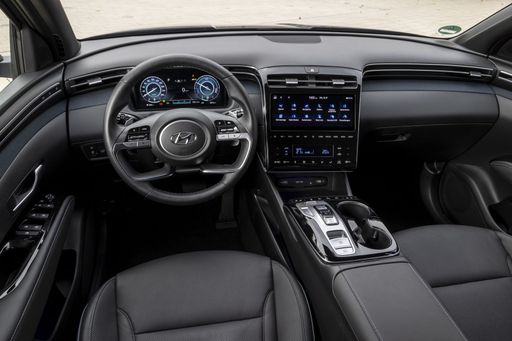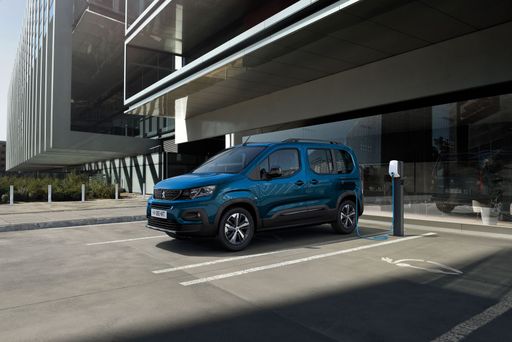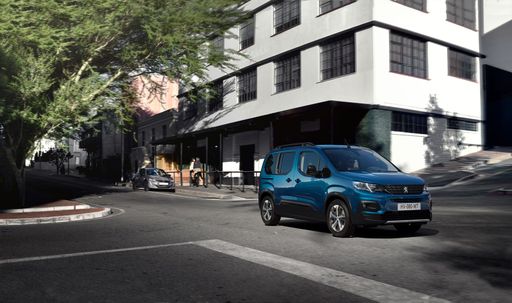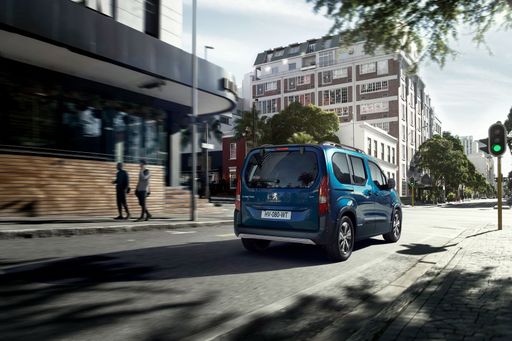Hyundai Tucson vs Peugeot Rifter - Differences and prices compared
Costs and Efficiency:
Price and efficiency are often the first things buyers look at. Here it becomes clear which model has the long-term edge – whether at the pump, the plug, or in purchase price.
Peugeot Rifter has a distinct advantage in terms of price – it starts at 23800 £, while the Hyundai Tucson costs 30600 £. That’s a price difference of around 6814 £.
Fuel consumption also shows a difference: Hyundai Tucson manages with 1 L and is therefore decisively more efficient than the Peugeot Rifter with 5.60 L. The difference is about 4.60 L per 100 km.
As for range, the Peugeot Rifter performs decisively better – achieving up to 339 km, about 269 km more than the Hyundai Tucson.
Engine and Performance:
Power, torque and acceleration are the classic benchmarks for car enthusiasts – and here, some clear differences start to show.
When it comes to engine power, the Hyundai Tucson has a convincingly edge – offering 252 HP compared to 136 HP. That’s roughly 116 HP more horsepower.
In acceleration from 0 to 100 km/h, the Hyundai Tucson is noticeable quicker – completing the sprint in 7.90 s, while the Peugeot Rifter takes 10.80 s. That’s about 2.90 s faster.
In terms of top speed, the Hyundai Tucson performs barely noticeable better – reaching 204 km/h, while the Peugeot Rifter tops out at 184 km/h. The difference is around 20 km/h.
There’s also a difference in torque: Hyundai Tucson pulls clearly perceptible stronger with 379 Nm compared to 300 Nm. That’s about 79 Nm difference.
Space and Everyday Use:
Cabin size, boot volume and payload all play a role in everyday practicality. Here, comfort and flexibility make the difference.
Seats: Peugeot Rifter offers evident more seating capacity – 7 vs 5.
In curb weight, Hyundai Tucson is slight lighter – 1542 kg compared to 1561 kg. The difference is around 19 kg.
In terms of boot space, the Peugeot Rifter offers decisively more room – 1050 L compared to 620 L. That’s a difference of about 430 L.
In maximum load capacity, the Peugeot Rifter performs clearly better – up to 3500 L, which is about 1701 L more than the Hyundai Tucson.
When it comes to payload, Peugeot Rifter clearly perceptible takes the win – 814 kg compared to 545 kg. That’s a difference of about 269 kg.
Who wins the race?
The Hyundai Tucson proves to be outperforms in nearly all aspects and therefore becomes our DriveDuel Champion!
Hyundai Tucson is the better all-rounder in this comparison.
 @ Hyundai Motor Company
@ Hyundai Motor Company
Hyundai Tucson
Costs and Consumption
View detailed analysis
Engine and Performance
View detailed analysis
Dimensions and Body
View detailed analysis
Hyundai Tucson
Hyundai Tucson marries bold, sculpted looks with a clever, roomy cabin that feels smarter than its price tag suggests. It's composed on the road, easy to live with day-to-day, and a sensible choice for buyers who want SUV style without the showroom theatrics.
details @ Hyundai Motor Company
@ Hyundai Motor Company
 @ Hyundai Motor Company
@ Hyundai Motor Company
 @ Hyundai Motor Company
@ Hyundai Motor Company
 @ Hyundai Motor Company
@ Hyundai Motor Company
 @ Hyundai Motor Company
@ Hyundai Motor Company
Peugeot Rifter
The Peugeot Rifter is a practical, family-friendly people carrier that makes everyday errands and weekend escapes feel effortless thanks to its airy cabin and clever, flexible interior. With chunky, purposeful styling and storage solutions everywhere, the Rifter manages to be both unashamedly useful and unexpectedly likeable.
details @ Peugeot / Stellantis Media
@ Peugeot / Stellantis Media
 @ Peugeot / Stellantis Media
@ Peugeot / Stellantis Media
 @ Peugeot / Stellantis Media
@ Peugeot / Stellantis Media
 @ Peugeot / Stellantis Media
@ Peugeot / Stellantis Media
 @ Hyundai Motor Company
@ Hyundai Motor Company
|
 @ Peugeot / Stellantis Media
@ Peugeot / Stellantis Media
|
|
|
|
Costs and Consumption |
|
|---|---|
|
Price
30600 - 46300 £
|
Price
23800 - 36600 £
|
|
Consumption L/100km
1 - 7.6 L
|
Consumption L/100km
5.6 - 6 L
|
|
Consumption kWh/100km
-
|
Consumption kWh/100km
18.3 - 19.1 kWh
|
|
Electric Range
64 - 70 km
|
Electric Range
328 - 339 km
|
|
Battery Capacity
-
|
Battery Capacity
-
|
|
co2
22 - 172 g/km
|
co2
0 - 158 g/km
|
|
Fuel tank capacity
42 - 54 L
|
Fuel tank capacity
50 L
|
Dimensions and Body |
|
|---|---|
|
Body Type
SUV
|
Body Type
High Roof Estate
|
|
Seats
5
|
Seats
5 - 7
|
|
Doors
5
|
Doors
4 - 5
|
|
Curb weight
1542 - 1889 kg
|
Curb weight
1561 - 1941 kg
|
|
Trunk capacity
546 - 620 L
|
Trunk capacity
322 - 1050 L
|
|
Length
4510 - 4535 mm
|
Length
4405 - 4755 mm
|
|
Width
1865 mm
|
Width
1848 mm
|
|
Height
1650 mm
|
Height
1818 - 1837 mm
|
|
Max trunk capacity
1721 - 1799 L
|
Max trunk capacity
3000 - 3500 L
|
|
Payload
523 - 545 kg
|
Payload
489 - 814 kg
|
Engine and Performance |
|
|---|---|
|
Engine Type
Diesel MHEV, Plugin Hybrid, Petrol, Full Hybrid
|
Engine Type
Electric, Diesel
|
|
Transmission
Automatic, Manuel
|
Transmission
Automatic, Manuel
|
|
Transmission Detail
Dual-Clutch Automatic, Automatic Gearbox, Manual Gearbox
|
Transmission Detail
Reduction Gearbox, Manual Gearbox, Automatic Gearbox
|
|
Drive Type
Front-Wheel Drive, All-Wheel Drive
|
Drive Type
Front-Wheel Drive
|
|
Power HP
136 - 252 HP
|
Power HP
102 - 136 HP
|
|
Acceleration 0-100km/h
7.9 - 11.6 s
|
Acceleration 0-100km/h
10.8 - 13.6 s
|
|
Max Speed
180 - 204 km/h
|
Max Speed
132 - 184 km/h
|
|
Torque
250 - 379 Nm
|
Torque
250 - 300 Nm
|
|
Number of Cylinders
4
|
Number of Cylinders
4
|
|
Power kW
100 - 185 kW
|
Power kW
75 - 100 kW
|
|
Engine capacity
1598 cm3
|
Engine capacity
1499 cm3
|
General |
|
|---|---|
|
Model Year
2024 - 2025
|
Model Year
2024
|
|
CO2 Efficiency Class
E, B, F, D
|
CO2 Efficiency Class
A, E, F
|
|
Brand
Hyundai
|
Brand
Peugeot
|
What drive types are available for the Hyundai Tucson?
Available configurations include Front-Wheel Drive or All-Wheel Drive.
The prices and data displayed are estimates based on German list prices and may vary by country. This information is not legally binding.
